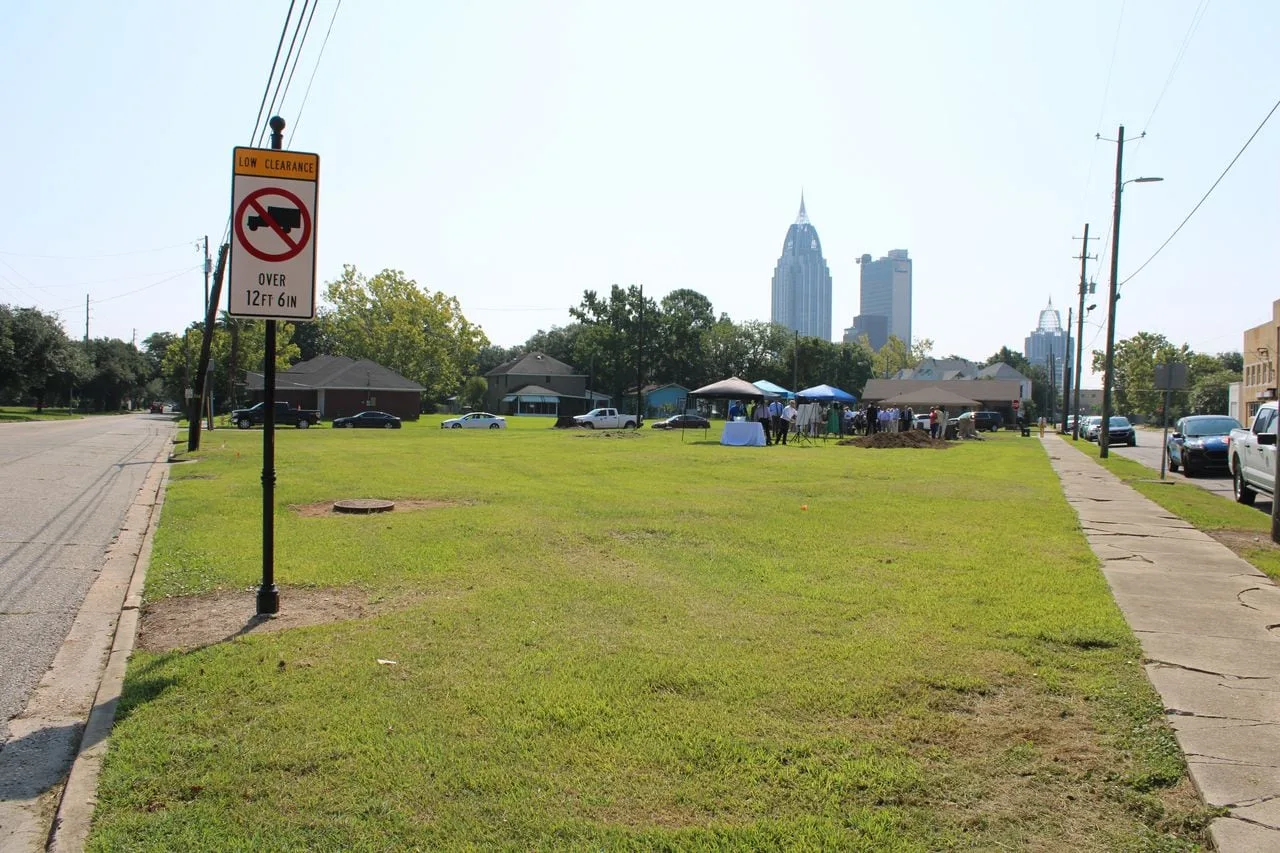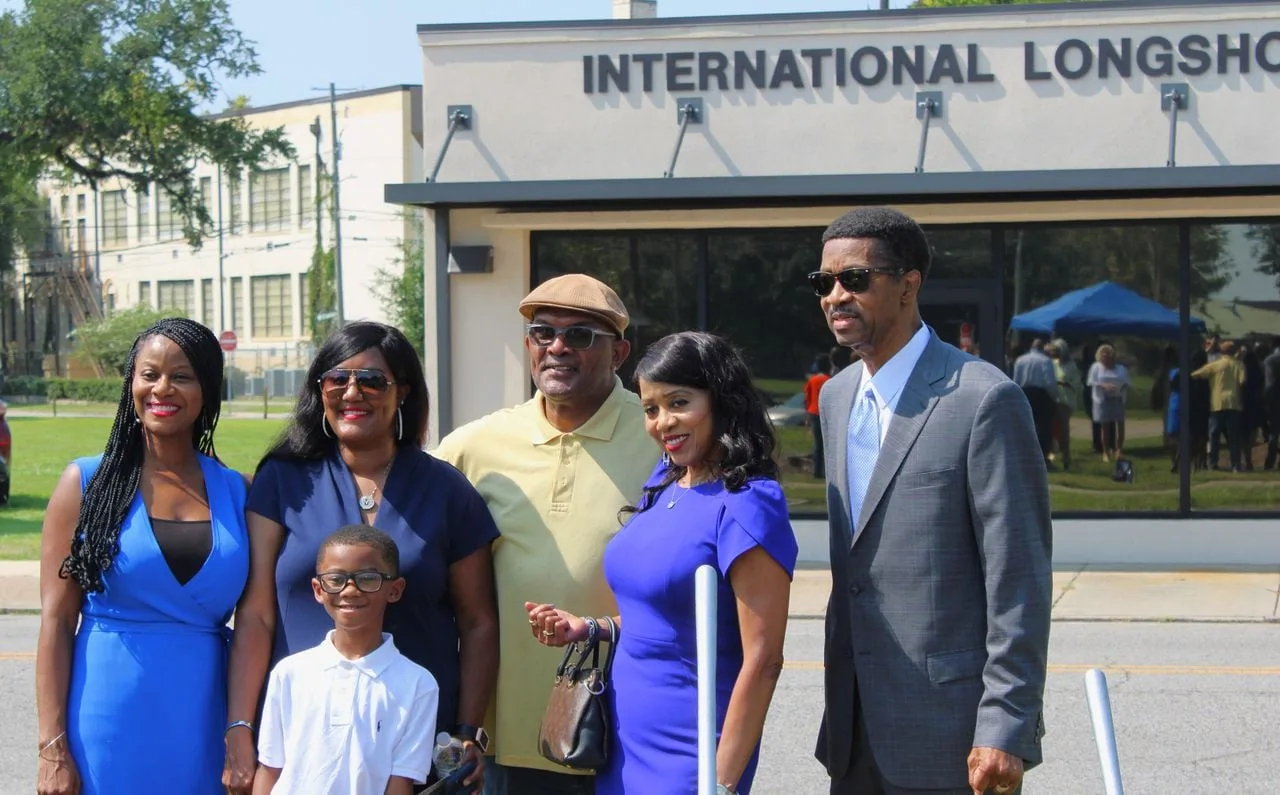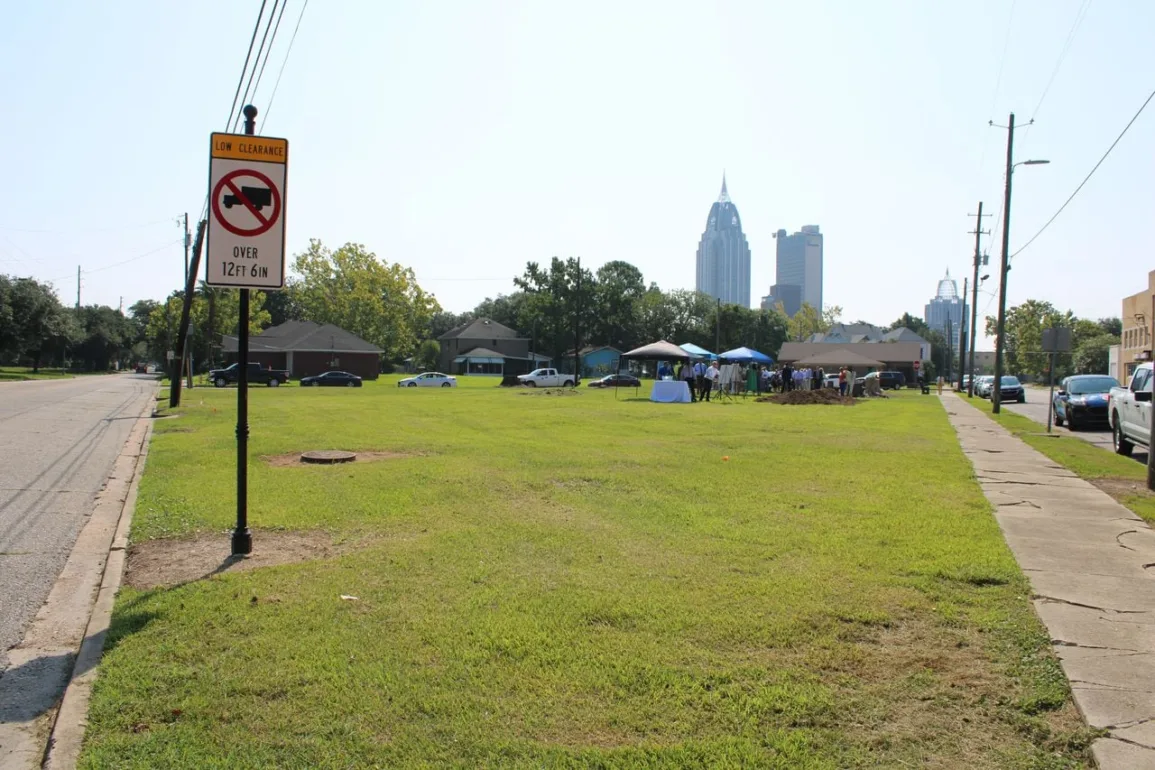When Conde Nast Traveler chose to list Mobile among “The Best Places to Go in North America & the Caribbean in 2024,” it said the main draw was “an all-year celebration of the city’s African American history.”
The publication cited a series of developments leading up to or planned for 2024, including the development of an Isom Clemon Civil Rights Memorial Park in downtown Mobile. Here’s a look back at the July 26 groundbreaking for that park, which drew city and county leaders and honored the legacy of a key figure in the civil rights movement in the area.
Mobile County Commissioner Merceria Ludgood, a driving force in the 20-years effort said she was excited and grateful to be one of those creating “the opportunity to elevate Isom Clemon’s name.”
“Because there’s so many people who’ve been asking me, who was Isom Clemon. And I think that’s sad, that more people don’t know,” Ludgood said. “But it gives us an opportunity to tell that story, because his story is the heart of the story of ILA Local 1410. It is the story of voting rights and civil rights in Mobile County. Just to have this time and this place to do that, I think is just extraordinary.”
The park is a roughly triangular lot at the intersection of Dr. Martin Luther King Jr. Avenue, Hamilton Avenue and Congress Street. It’s owned by the city, but the lion’s share the money for its development, which will cost around $1.4 million, is coming from funds received by the county under the American Rescue Plan Act of 2021.

Isom Clemon Civil Rights Memorial Park is a roughly triangular lot north of downtown Mobile’s Dauphin Street entertainment district. At left is Congress Street, and right is Dr. Martin Luther King Jr. Avenue.Courtesy of Mobile County
The historical context of the location is at least twofold. Firstly, Dr. MLK Jr. Avenue once was Jefferson Davis Avenue, home to a thriving Black business district known as “The Avenue” in the days before integration. Secondly, the park is across from the longtime home of International Longshoremen’s Association Local 1410, founded in 1936 to represent African American dock workers.
As a longtime leader of the union and a founder of the Alabama Democratic Conference, Clemon was a leader in the push to win civil rights in general, and voting rights in particular, for Black citizens of Mobile County. A Mobile Museum of Art timeline on civil rights in Mobile says of the building at 505 Dr. MLK Jr. Ave. that “some of the most historic meetings in Mobile’s civil rights history have been held there.”
Ludgood and others, notably State Rep. Sam Jones, said that the open space across from the park had long been a gathering spot for member of the union and the community in general. Jones, who previously served as a Mobile County commissioner and Mobile’s mayor, said it remained a significant spot politically long after the peak years of the movement.
“This was the place where retirees, members of the union, members of the community, people just in general came to sit down and talk about various issues,” Jones said. “I spent a lot of time up here, both as county commissioner and mayor, because you could hear some of the things you needed to hear, up here. These guys were not bashful about telling you about what they thought was going on in the community.”
“As we came to this park, you could really hear discussions on everything,” he said. “If you wanted to know where you stood, as an elected official, over here, all you had to do was come to the park. And they’d let you know. And now some people got ran out of the park. That’s the way it was here.”
Jones said efforts to develop the park went as far back as 2003, but it had been hard to acquire all the land. As things stand, the city now owns all but one small corner parcel.

Member of Isom Clemon’s family attended a groundbreaking for a Mobile park named in his honor. From left are Sonja Dennis, Yevette Moore, Tony Dennis, Willie Baptiste, Darlene Moore and Cleo Brown. Behind them is the home of International Longshoremen’s Association Local 1410, an organization that Clemon led for years.Courtesy of Mobile County
Elizabeth Stevens, president and CEO of the Downtown Mobile Alliance, said efforts ramped up in 2016 when the Rotary Club of Mobile obtained a $4,500 grant and matched it with another $12,000 to begin developing plans for the park with community input. That same year Councilman Levon Manzie sponsored a council resolution to name the park for Clemon. (Stevens was one of several speakers at they groundbreaking who gave credit to the late Manzie.)
“So the pressure was on at that point to design a park that was worthy of that name,” Stevens said.
Plans call for the park to have features such as a playground, a seat wall, landscaping that provides a buffer from traffic noise, benches, tables and a tree-shaded lawn. It also will feature sculpture.
One work is a metal angel commissioned by the Downtown Mobile Alliance and created by local artists Charles Smith and Frank Ledbetter.
Another display, selected through a contest overseen by Mobile Arts Council, will include a larger-than-life bronze statue of Clemon with a series of educational plaques that will “tell the story of organized African American labor in Mobile and both Clemon’s and the ILA’s role in the local civil rights movement.” These will be created by Steven Whyte Sculpture Studios and Mobile Studio.
Lucy Gafford, executive director Mobile Arts Council, said that public art has multiple benefits but “most importantly it represents a community’s values, what they hold dear and what they find important.”
Mayor Sandy Stimpson said that the park fits in with other developments such as the recent dedication of the Africatown Heritage House museum.
“Those who are coming to see the Clotilda, one day those that come to the city, they’ll come right here, they’ll understand who Isom Clemon was,” Stimpson said. “So I think it’s just part of perpetuating the history of Mobile and the part that he played in the African-American community.”
Clemon died in 1985. Several of his descendants were on hand for the groundbreaking, including daughter Darlene Moore.
“It was a great celebration of the work that my father did,” she said. “He was dedicated to everyone, really. He was dedicated to the ILA, to the union, but he was concerned about people. He was genuinely concerned about people. … It’s a celebration of all the people of Mobile. Not just one race. Everybody. And that’s what Daddy stood for.”
One of her father’s adages was, “If by any chance somebody does you bad, do them better,” she said.
“Let me tell you something,” she said. “He loved Mobile and the state of Alabama.”
“I call this the gateway to the civil rights and cultural heritage district,” Ludgood said. She said the district “does not yet exist, but it is in the master planning process, it is in my mind’s eye and the mind’s eye of others.”
Nearby stands the Davis Branch Library, a miniature replica of Mobile’s Ben May Main Library built to serve Blacks during segregation. Ludgood has backed ongoing work to restore the historic site and turn it into a cultural center. Also not very far away is Unity Point Park, where a statue celebrates the détente between Mobile Mayor Joseph Langan and civil rights leader John LeFlore.
The new park will serve as a “gateway,” Ludgood said, and the goal “is to keep walking down The Avenue until we get to a place we can restore it to its former greatness.”



